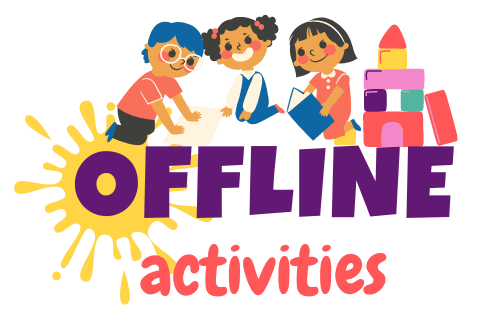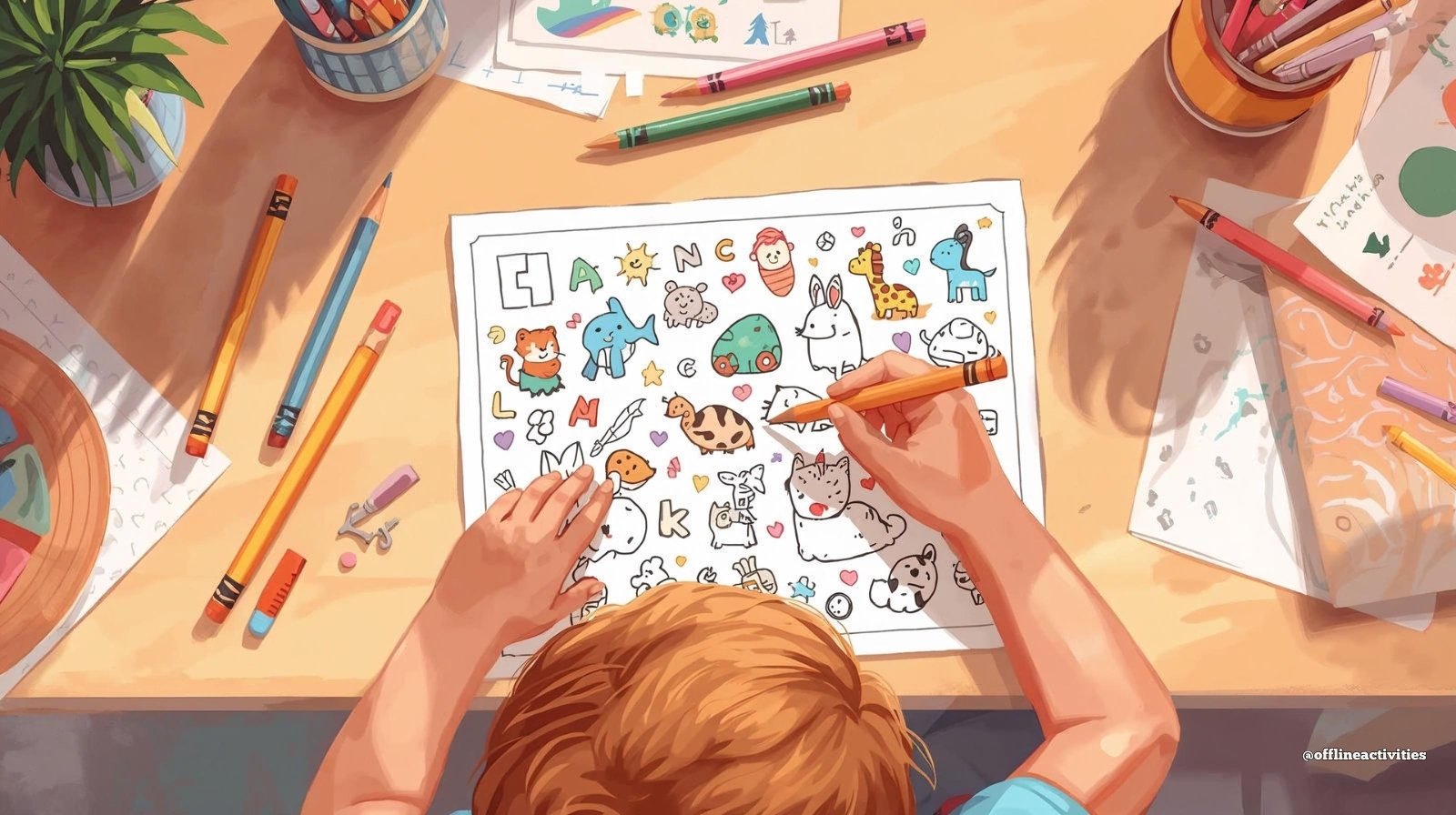Coloring may look like simple fun, but for children aged 3–8, it’s one of the most powerful screen-free learning tools you can offer. In an age where glowing screens compete for attention, coloring invites calm, focus, and imagination back into a child’s world.
Parents and teachers often worry about short attention spans, overstimulation, or finding meaningful offline activities. The good news? Coloring is more than a pastime — it’s therapy, education, and creativity rolled into one. Through crayons, colors, and paper, kids explore emotions, learn patience, and strengthen skills that shape their academic and emotional growth for years to come.
✨ Quick Take: Why Coloring Matters
-
🖍 Builds fine motor skills and hand-eye coordination.
-
🌈 Boosts focus, patience, and creativity.
-
💬 Encourages self-expression and emotional regulation.
-
🤝 Strengthens social and communication skills.
-
💖 Fosters screen-free family bonding through shared creativity.
🖐 Fine Motor Skills Through Coloring
Coloring is a gentle workout for tiny hands. As children grip crayons, markers, or colored pencils, they train the small muscles responsible for writing, buttoning shirts, or tying shoelaces later on.
Step-by-Step Learning Through Coloring
-
Provide thick crayons or triangular pencils for a comfortable grip.
-
Encourage slow, steady coloring rather than scribbling.
-
Praise control and effort more than “staying in the lines.”
Educational Value
This activity enhances coordination, precision, and concentration — foundational skills for early writing.
Teacher insight: “When my preschoolers color daily, their pencil control and confidence improve within weeks. It’s the simplest way to prepare them for handwriting.”
What small masterpiece could your child create today?
🧠 Color Recognition & Cognitive Growth
Every color choice helps a child’s brain grow. When they decide between red or blue for a flower, they’re practicing decision-making, visual processing, and planning — essential cognitive skills.
Try This
-
Offer limited palettes (e.g., three colors) to teach focus.
-
Use themed pages (animals, nature, alphabet) to connect coloring with subjects like science or language.
Quick Insight
🧩 Studies show that children who engage in art-based learning demonstrate up to 25% better memory retention than those relying solely on digital activities.
Which colors best describe your child’s world today?
💬 Emotional Expression Through Art
Coloring offers a safe outlet for feelings children can’t yet name. A frustrated child might color with heavy strokes or darker shades, while a joyful one might choose bright tones. This expression builds emotional intelligence and self-awareness.
Mindful Coloring for Calm
-
Set aside 15 minutes of quiet time daily for coloring.
-
Encourage kids to talk about the colors they choose and why.
-
Pair with soft music or nature sounds to boost mindfulness.
What emotions might your child express with a box of crayons today?
🌈 Creativity & Imagination Unleashed
Coloring isn’t about rules — it’s about discovery. When children experiment with unusual color combinations, mix media (crayons + watercolor), or imagine entire stories behind their drawings, they’re learning to think creatively and solve problems.
Fun Idea
Turn coloring into storytelling:
“Who lives in your drawing?”
“What happens next in your picture?”
This transforms art into language development, emotional storytelling, and cognitive play — all without screens.
🏫 Using Coloring Pages in Early Education
Coloring belongs in every early childhood classroom and homeschool routine. It blends perfectly with thematic learning.
How to Use Coloring Educationally
-
Alphabet Pages: Reinforce letter recognition.
-
Math & Shapes Pages: Build early geometry understanding.
-
Science Themes: Explore nature, space, or seasons.
| Type of Coloring Page | Skill Focus | Screen Use Level | Emotional Value |
|---|---|---|---|
| Digital Coloring Apps | Precision only | High | Low |
| Printable Coloring Sheets | Motor + Emotional | None | High |
| Themed Educational Pages | Academic + Creative | None | Very High |
Parent example: “We turned coloring time into a daily routine before dinner. My daughter talks more, focuses longer, and sleeps better — all thanks to screen-free evenings.”
How could your classroom or home benefit from 15 minutes of coloring magic each day?
🧩 Educational & Psychological Insights
Coloring nurtures the whole child — mind, body, and emotions.
-
Cognitive: Strengthens problem-solving and pattern recognition.
-
Physical: Refines hand coordination and spatial awareness.
-
Emotional: Builds patience and reduces stress.
-
Social: Encourages teamwork in group coloring sessions.
Research shows that even short periods allocated for coloring can have significant impacts on children’s dexterity. According to the American Psychological Association, engaging in coloring can provide children with not only fine motor skill benefits but also emotional and cognitive advantages.
In addition to the physical benefits, coloring can also serve as a calming activity. Many kids experience stress in various situations, and coloring can provide them with a sense of relief and relaxation. This emotional processing can lead to a better mood and increased focus for other activities, including learning and play.
Research from Harvard’s Center on the Developing Child and Montessori learning models confirms that tactile, creative play develops more lasting neural pathways than passive digital learning.
❓ FAQs
1. Why is coloring important for young children?
It strengthens hand muscles, focus, and creativity — essential for school readiness.
2. How can I make coloring more educational?
Use themed pages linked to lessons (alphabet, animals, seasons) to reinforce learning.
3. Does coloring really improve emotional health?
Yes. Coloring promotes relaxation and helps children express emotions safely.
4. How much time should kids spend coloring daily?
15–30 minutes of focused coloring each day is ideal for ages 3–8.
5. What’s better: apps or paper coloring?
Hands-on paper coloring supports more sensory engagement, patience, and creativity.
6. Can teachers use coloring for classroom management?
Absolutely — it helps calm groups, transitions between lessons, and fosters cooperation.
🌟 Conclusion
Coloring pages aren’t just fun — they’re foundational for lifelong learning.
Through each color choice, stroke, and smile, children practice patience, creativity, and focus — all without a screen in sight.
✨ Every screen-free moment gives your child space to grow, imagine, and connect.
YOU MAY ALSO LIKE
Screen Free Activities For 2 Year Olds
How Printable Games Help Kids Learn
Word Find Free- First-Grade Friends
Free Word Search Puzzle For kids Video

